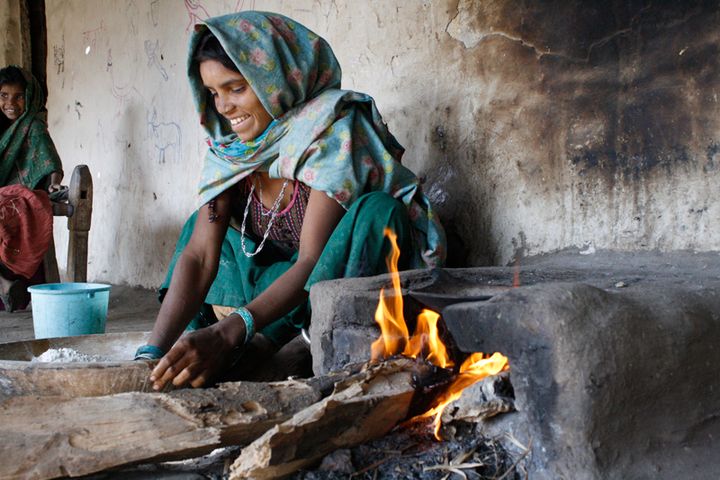How India is primed to launch the next big carbon market
If transparency issue can be addressed, it could be one of world's biggest mitigation experiments

Welcome to today’s edition of Lights On, a newsletter that brings you the key stories and exclusive intel on energy and climate change in South Asia.
A reminder that the easiest -and free - way you can support this newsletter's growth is by sharing it with your colleagues and inviting them to subscribe. You can share a link using the button below or forward this email directly. It takes a minute but it makes a big difference.
While India’s success in the solar space is globally recognised, so far the country doesn’t seem to have put the same effort into reducing its economy’s reliance on carbon assets, with coal alone accounting for nearly 70 percent of its power production.
The world’s third largest emitter, India has promised to lower its economy’s carbon intensity as part of its climate goals, reducing the contribution of fossil fuels to each unit of its gross domestic product. The plan so far has been to meet all new energy demand through clean sources, without drastically cutting the existing fossil fuel output. But a new carbon market experiment to be launched in one of India’s industrial states suggests that things may be starting to change.
An ambitious pilot project
The western state of Gujarat is going to launch its own carbon market within the year, building on the success of the existing cap-and-trade scheme focussed on improving air quality. In a cap-and-trade system, a government establishes an overall emissions ceiling, which can be carbon or other pollutants in the air, and industries are then allowed to emit a certain amount of pollution to run their operations. If they exceed their allowance, they must purchase ‘credits’ from other industries which have polluted less than expected. This way, you get a financial reward for avoiding pollution, and a penalty for polluting too much.
Nicholas Ryan, an economist at Yale University who helped design the new Gujarat carbon market, which is still in the planning phase, says that this market-based scheme “would apply directly to about 120 sources within the state, the emissions of which would directly be measured and capped”. In terms of size, the Gujarat market would target around 200 million tonnes per annum, involving both industries and the power sector. For comparison, this would be twice as large as the Regional Greenhouse Gas Initiative in the United States, a major scheme currently involving 11 states.
Step towards a national carbon market
Crucially, if the programme is successful, it could inform the roll-out of a comprehensive national emission trading scheme, whose sheer size would immediately place it among the biggest mitigation programmes in the world.
India is not new to market-based solutions for carbon reduction. It already has a coal cess, which taxes coal production, a Perform, Achieve and Trade (PAT) scheme and Renewable Energy Certificates (REC). The former targets carbon intensive industries such as thermal power, cement, iron and steel, rewarding them for improving their energy efficiency. The REC platform allows businesses to trade credits based on the amount of clean energy they produce.
Logistically, it wouldn't take much for India to roll out a nationwide carbon market, Ryan says, because thanks to the existing programmes a lot of the essential information is already there, including extensive data on which firms emit the most. Through its Bureau of Energy Efficiency, the government has already published a blueprint for a national carbon market, currently open to public input. The plan includes a cap-and-trade and a voluntary phase, in which participants exchange carbon offsets, namely credits earned by removing carbon from the atmosphere, for example by planting trees, or avoiding emissions by increasing efficiency or switching to cleaner fuels.
As well as reducing emissions, a robust carbon market could also become a strategic tool to improve the flow of climate finance, Ryan says. “There's a growing commitment by rich nations to transfer a lot of money for green investments in developing countries, but the mode of how that's going to happen hasn't really been worked out.” The commitment is, as of now, much greater than the amount of actual money flow, he explains, “so you can also think of a carbon market as providing one possible pathway to inject finance into clean energy investment in India and other developing countries”.
Unruly offsets
Currently, India is the world’s larger exporter of carbon credits, which means that companies around the world pay to offset the carbon they emit at home by investing in mitigation projects in the country. Over 1,000 projects have been registered under the UN Clean Development Mechanism alone.
“There is definitely a certain amount of uncertainty over carbon offsets, when countries decide to adopt some form of carbon pricing regulation - either through carbon taxes or emissions trading systems”, cautions Yash Verma, who designs tech products for Climes, a startup which helps brands neutralise their carbon emissions. “However, globally, demand for carbon credits far outmatches supply.”
Despite the large number of credits generated within India there is very little domestic demand, Verma says. “We are bullish that this will change in the next 2 to 3 years,” he says, but for now carbon offsetting “is highly fragmented and largely caters to the voluntary market, where prices vary significantly, sometimes in cents”.
Some estimates peg the value of the Indian voluntary carbon market at $300 million, he says, “but we feel it is a conservative estimate”.
Transparency concerns
A lot of action is happening on the ground, says the lead for carbon markets at one of India’s top renewable energy companies, but the quality and transparency of the offsets remain a concern.
As an example, the expert mentions a recent project underway in India, which swaps biomass-powered for gas-fueled cookstoves, reducing indoor pollution. “If you look at the official registry, you will see that one cookstove is expected to yield seven credits. In my mind this is impossible, because if you look at the amount of food an average family of five uses, the number of credits cannot be more than 2.5 or three.”
Another aspect that will need to be addressed is who really benefits from the projects. “When I generate one credit, I may sell that credit for say $20. The price at which I would have bought that credit from the community would have been $4 or $5, so I made supernormal profits,” the lead says. “It is my duty to give back to the community.” Businesses have the responsibility to set up a clear set of rules whereby “a large share of my profits, above my business case, goes back to the community. At the end of the day, that’s what carbon financing is for.”
That's all for today! If you enjoy this newsletter, please share it with a friend or two:



